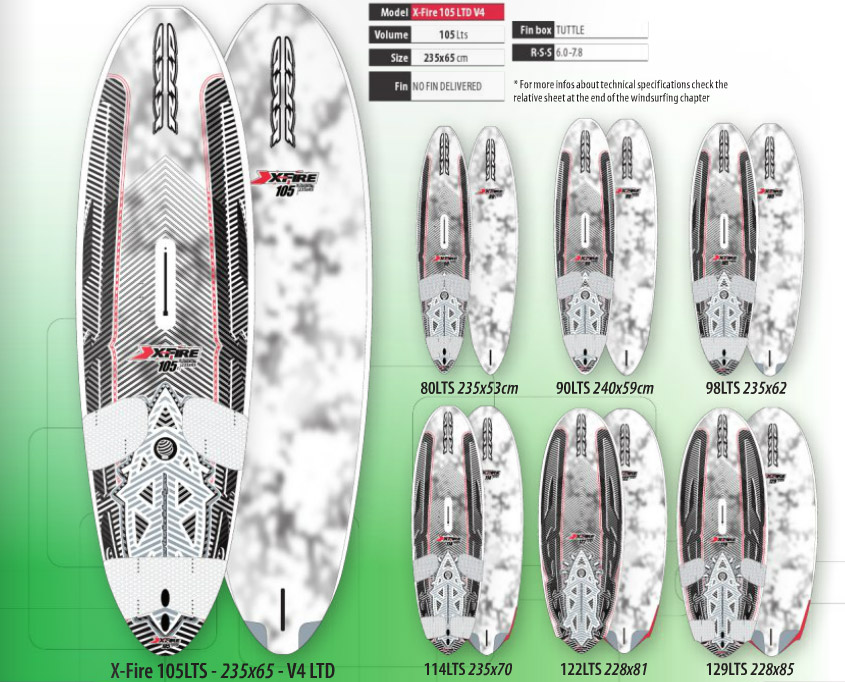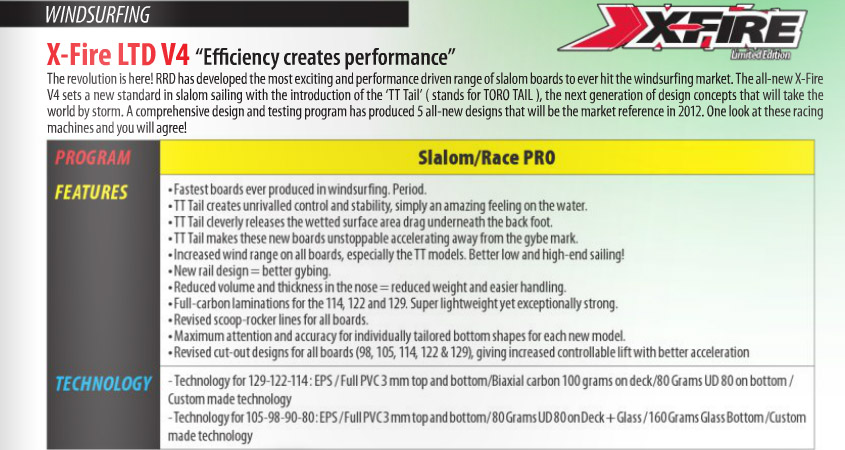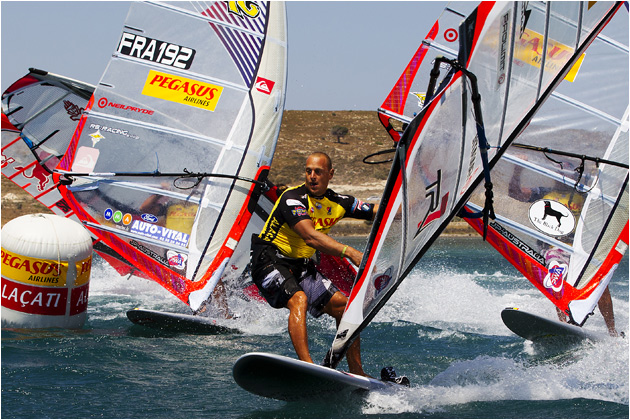Hi
I have been injured and so have been watching the windsurfing action from the beach for the last few weeks. Not good. Alberto Menegatti joined some of the racing guys the other day on the long runs we do when the south-westerly blows (we sail all the way out to the submarine bouy (4kms there and back) and this allows the fast guys to open the gap with the others. Very interesting. The new Gaastra Vapors really perform and we are seeing more and more of them on the water. Alberto certainly had his fully lit. These sails must be some of the coolest things on the water right now.
The new Gaastra Savages have also arrived and Anthony and Karel, (a visiting sailor from up north) were smoking on them a few days ago. They had the 6.6m Savages on Manta 110l boards. Very, very fast and very impressive.
Anyway I got back on the water yesterday and was offered a ride on the new Falcon 99l by Johnny, a local who does some testing for Fanatic. He had a Deboichet SL4 34cm under it and I clipped my 6.6m Ka Koncept on top. The 99l is one impressive machine. It has a freeride type of comfort and eats through the chop but just keeps accelerating with no apparent upper limit. You decide when you want to slow down. Gybes are easy provided you enter at speed but this board is only about speed so leisurely sailors need not apply. Despite this massive performance potential the board is really easy to sail. The straps are easy to get into and out of and the low deck seems to steady everything over the bumps. The deck profile gives good support and confidence when standing on the leeward rail in the gybe. Some slalom boards give you the feeling that your foot could slip if you place it too close to the leeward edge but not this one. All of these things give the impression that massive attention has been given to every aspect of the design. Well done guys. A classy piece of equipment.
I must give a mention to the Deboichet SL4 as well. Under the 99l Falcon the fin is rock solid, fast and so good over the chop. If you are in the market for a 62cm wide slalom board, you should have the Falcon on your short list and consider an SL4 if one is available. A really good combination.
Speaking of fins, I noticed Craig from Fanatic using Sonntag fins. I have been watching Sonntag for some time and based on the comments on the Internet and performance stats on the speed sites they have to be one of the best slalom fins available right now. If you live in a country with a strong currency, have deepish pockets and are looking for a special fin you may want to give the new Ifju Reaction some consideration. Peter Ifju is one of the great innovators in windsurfing and combines an awesome understanding of the physics involved with true passion for the sport. Only good can come from this and his new fins are sure to be pure class.
The wind looks set to blow again today so we are going to have to punish our bodies yet again. Once more to the beach...
Talk to you soon

















